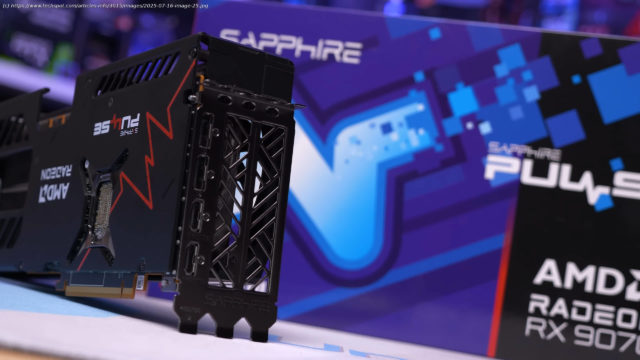After months of testing and tracking down nearly every Radeon RX 9070 XT model, we’re finally ready to compare 14 cards in detail, covering gaming, thermals, and.
This Radeon review has been in the making for months, not just because testing takes a considerable amount of time, but also because obtaining nearly every Radeon RX 9070 XT model on the market has been a major challenge. However, we’ve managed to do it – well, almost.
The only missing models are the Asrock Challenger and PowerColor Reaper, neither of which is currently in production. Manufacturers are prioritizing higher-end, higher-margin parts due to overwhelming demand. We don’t agree with that strategy, but from a business perspective, it makes sense, and ultimately we have no influence over it.
The good news is that we have 14 models on hand. All have been rigorously tested, evaluating both gaming and thermal performance, along with their individual feature sets. Let’s take a look at each model individually before diving into the results.
We’ll begin with the Asrock RX 9070 XT Steel Legend, a white graphics card – though there is a ‘Dark’ version in black. The Steel Legend currently costs $715. For a base model 9070 XT, it is fairly well-equipped.
It features a triple-fan cooler with ARGB lighting and a full-length backplate with a cutout. The card measures 296 mm in length, 130 mm in height, and 57 mm in width, making it a triple-slot model. It weighs 1,153 grams.
As for power, Asrock has opted for two 8-pin connectors, which is a standard configuration. Unfortunately, there is no dual BIOS feature. Instead, Asrock includes an RGB header and a switch to toggle lighting on or off. Display output is standard, with three DisplayPorts and a single HDMI.
The Steel Legend has a noticeably plastic appearance. While some may appreciate the lighting effects, the card does look and feel cheap overall.
The Taichi is Asrock’s flagship RX 9070 XT model, currently priced at $800. This version is only available in black and is essentially a larger, more robust version of the Steel Legend. While the design is quite similar, Asrock has added several aluminum elements to the fan shroud, giving it a more premium look and feel.
This model also includes dual BIOS support and swaps the two 8-pin PCIe power connectors for a single 12V High Power connector.
Overall, it is a larger, heavier graphics card, weighing 1,470 grams. It measures 330 mm in length, 139 mm in height, and 60 mm in width, making it another triple-slot model. The Taichi appears to have it all, so we’re especially curious to see how it performs.
The most affordable RX 9070 XT model from Asus is the Prime, priced at $720. It is a fairly basic graphics card, but it includes all the essentials, such as a full-length aluminum backplate, dual BIOS support, and a solid array of display outputs: three DisplayPorts and a single HDMI.
It’s a triple-fan model weighing 1,100 grams and measuring 313 mm long, 131 mm tall, and 50 mm wide, making it another triple-slot card. It uses three 8-pin PCIe power connectors, so there’s ample power input. Being a Prime model, it lacks RGB lighting, offering instead a clean and simple black design.
The other Asus RX 9070 XT model is the TUF Gaming, which is priced at a steep $850. That said, in terms of design, it is one of the more premium models. Compared to the Asrock cards, it features significantly less plastic, though it is not fully aluminum like some GeForce models.
Nonetheless, it uses a substantial amount of aluminum, contributing to a more solid and premium feel. This card is also massive, measuring 330 mm in length, 140 mm in height, and 63 mm in width. It weighs 1,448 grams, putting it close to the Taichi. Asus has again opted for three 8-pin PCIe connectors and dual BIOS support, and this time includes tasteful ARGB lighting. Overall, the TUF Gaming is a very hefty RX 9070 XT graphics card.
Moving on to Gigabyte, which also offers two models, we will start with the «Gaming.» Yes, a 9070 XT graphics card that is simply named «Gaming.» So, I suppose you will know what to do with it – mine bitcoin?
The Gaming is a very basic-looking graphics card. It is reasonably compact for a triple-fan version, measuring just 289 mm in length and 128 mm in height, though it is 55 mm thick and will occupy three slots. It also weighs a solid 1,261 grams.
For power, Gigabyte has used a triple 8-pin configuration. As for display outputs, the card features a less common setup with two DisplayPorts and two HDMI ports. If you require dual HDMI outputs, this may be the right model for you. It also includes dual BIOS functionality, ARGB lighting, and a full-size aluminum backplate with a passthrough area. Overall, the Gaming appears to check all the boxes.
The highest-end 9070 XT model from Gigabyte is the «Elite», which presents a much more refined and serious appearance compared to the Gaming. Pricing is around $760, although availability is limited in the United States.
Compared to the Gaming, the Elite is 23 percent heavier and much larger, measuring 334 mm long, 136 mm tall, and 60 mm wide. It is a true triple-slot card. Like the Gaming, it features two DisplayPorts and two HDMI ports and uses three 8-pin PCIe power connectors.
Gigabyte has included dual BIOS functionality, a full-size aluminum backplate with a passthrough area, and an impressive array of ARGB effects. The halo lighting around the fans looks especially striking. While the fan shroud is made entirely of plastic, the design still manages to look high-end with some thoughtful detailing. Overall, it is a great-looking model that should perform well.
Now it is time to look at what PowerColor has to offer. Please note that we are skipping the Reaper, as PowerColor is no longer producing it. We were unable to obtain one either.
That leaves the Hellhound as the most affordable PowerColor 9070 XT, currently priced at $750, making it the cheapest 9070 XT available there. The Hellhound comes in both black and white variants. We will take a quick look at the white version next.
The Hellhound is a basic model, but it includes all the essentials: dual BIOS support, a full-size aluminum backplate, three DisplayPorts, and a single HDMI output. It is also fairly compact for a triple-fan card.
In total, it measures 328 mm in length, 127 mm in height, and 50 mm in width, occupying three slots. It weighs 1,172 grams. The fan shroud looks like aluminum but is actually plastic. Even so, the card appears quite premium for a base model. It does not feature ARGB effects, but there are soft blue LEDs at the end of the card. However, since the color cannot be changed, users who are not fans of light blue will need to turn them off.
Now for a quick look at the white version of the Hellhound. PowerColor has done an excellent job with this model. By contrast, the white version of the Asrock Steel Legend is not very cohesive – its plastic fan shroud is partly white with gray areas, the backplate is mostly white, the heatsink is silver, and the PCB is black. It does not offer a truly clean white aesthetic.
The Hellhound White, on the other hand, is a work of art. The fans, shroud, heatsink, heatpipes, power connectors, PCB, fan cables, backplate, and even the I/O bracket are all white. The only non-white parts are the GPU retention bracket and the rear screws. Everything else visible with the card fully assembled is white, making it a perfect fit for any white-themed build. Excellent work from PowerColor.
PowerColor’s flagship 9070 XT model is the well-known Red Devil, which is also available in an all-white version. The Red Devil is priced at $820. As a flagship product, it is very large, measuring 340 mm long, 134 mm tall, and 64 mm wide.






